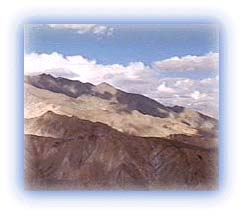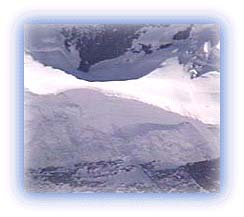Ladakh himalayas
· Villages
· Valleys and plateaus
· Lakes
· Passes
· Glaciers
· Rivers
· People
· Religion
· Fairs and festivals
· Other places of interest

![]()
| General info Ladakh - The Land of High Passes Across the Kashmir Valley and over the famous Zoji La pass(Zozi La pass) lies Ladakh -- the Land of High Passes. It is amagical land, so completely different from the green landscapeof some other parts of the Himalayas. It is nature at itsextreme. A land of freezing winds and burning hot sunlight,Ladakh is a cold desert lying in the rainshadow of the GreatHimalayas and other smaller ranges. Little rain and snowreaches this dry area, where the natural forces have created afantastic landscape. | Images of Ladakh. (Download Realplayer) |
 |
| Landscape of Ladakh. Credit: Karamjeet Singh |
Ladakh has an average elevation of 2,700 m to 4,200 m. Thearidity of this region is due to its location in the rainshadow area of the Great Himalayas, elevation and radiation of heatfrom the bare soil. The most striking physical feature ofLadakh, however, is the parallelism of its mountain ranges. Theregion is extremely dry, with rainfall as low as 10 cm eachyear.
 |
| Icy Ladakh Credit: Karamjeet Singh |
Until the advent of the aircraft, Ladakh could only be reachedover dangerous, high passes. The Zoji La pass connecting Ladakhto Kashmir is at 14,000 ft and is the lowest approach from thewest. The southeast approach has to cross the 18,200 ft highTanglang La. And to the north lie the Saser La and Karakorampasses, gateways to Central Asia from where trading caravansused to come for many centuries.
All rights reserved